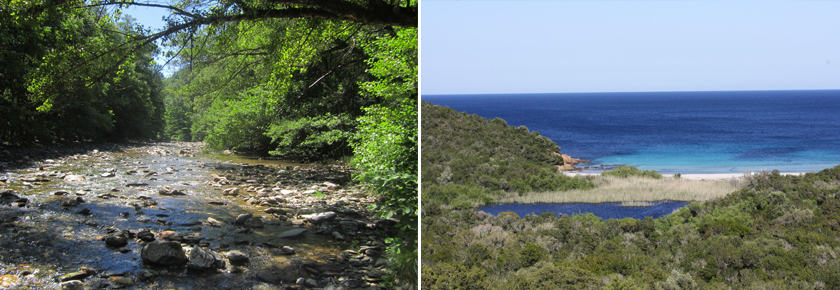
HabRef is a national repository comprising the official reference versions of the typologies of habitats or vegetation covering marine and/or continental environments of French mainland and overseas territories. National typologies, or those relating to an overseas territory, and international typologies are taken into account when they concern France.

Falaise littorale (pointe du Grouin, Ille-et-Vilaine) © V.Gaudillat & Les Antilles © F.Mazeas
The units presented in these typologies are either types of habitat, or types of vegetation.
In more detail, two major categories of "typologies" (in the broad sense) can be distinguished:
The first is characterised by a hierarchical classification of the units, and all of the units known in the territory concerned appear in the typology. This is, for example, the case with the classification of benthic marine habitats of metropolitan France, EUNIS (European Nature Information System) habitats, or units of phytosociological classification.
The second consists of lists of habitats to be conserved in the framework of international conventions or directives. All of the habitats of the territory concerned are not, therefore, included. For convenience, the habitats listed are generally grouped by main types of environment, but these are not used as such. The Habitats Directive and the Barcelona Convention are targeted.

Rivière © J.Louvel & Carataggio (Corse-du-Sud) © V. Gaudillat
| Metropolitan France | Environment |
|---|---|
| Habitats manuals | |
| International | |
| Habitats of Community interest (HCI) | |
| OSPAR convention | |
| Barcelona Convention |
In the field, operators use one or the other of these typologies. In order to make the best use of the data collected, it is necessary to be able to convert this data from one repository to another. As a result, an important work is carried out to establish correspondences between typologies.